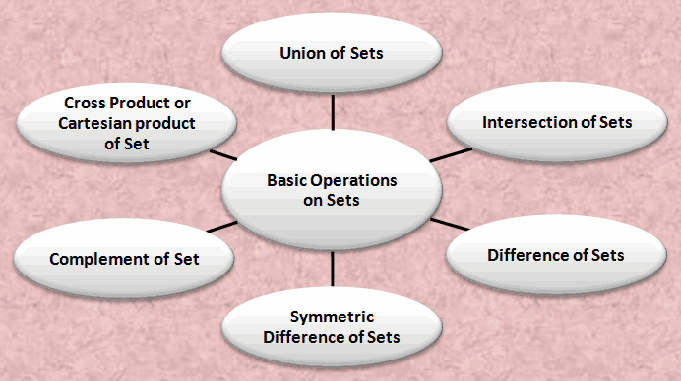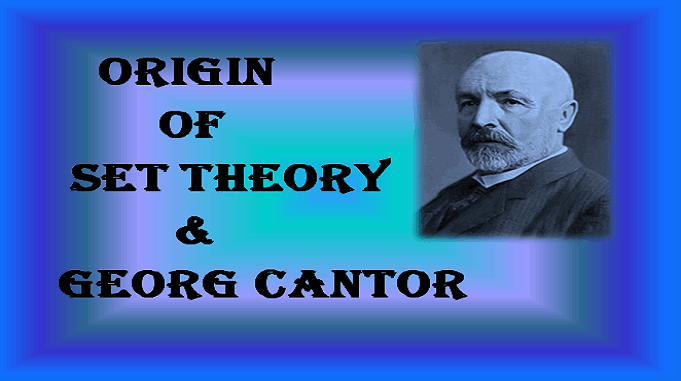
Basic Operations on Sets –
There are certain operations that, when performed on two sets, result in the creation of another set. Now we will define some set operations and examine their properties to see how they work. Union of Sets, Intersection of Sets, Difference of Sets, Symmetric Difference of Sets, Complement of Set, and Cross Product or Cartesian product of Set, are included in Set operations. All of our sets will now be referred to as subsets of some universal set.
1. Union of Sets:
Let A and B be any two sets. The union of A and B denoted by , is the set of all elements which belongs to A or belongs to B or both sets, that is,
=
or
For example, Let A = {1, 2, 3, 4} and B = {3, 1, 6, 8}, then,
= {1, 2, 3, 4, 6, 8}.
Note: In , we write all the elements of A and all the elements of B, but the common elements of Sets A and B have been taken only once.
2. Intersection of Sets:
Let A and B be any two sets. The intersection of A and B denoted by , is the set of all common elements of A and B. In other words, the intersection of A and B is the set of all elements which belongs to both A and B, that is,
=
and
For example, Let A = {1, 2, 3, 4} and B = {3, 1, 6, 8}, then,
= {1, 3}.
3. Difference of Sets:
Let A and B be any two sets. The difference of A and B is the set of elements which belong to set A but not to set B. It is denoted by and reads ‘A minus B’. Then,
=
and
Similarly,
=
and
Therefore,
For example, Let A = {1, 2, 3, 4} and B = {3, 1, 6, 8}, then,
= {2, 4}, and
= {6, 8}.
4. Symmetric Difference of Sets:
Let A and B be any two sets. The symmetric difference of A and B is defined as,
For example, Let A = {1, 2, 3, 4} and B = {3, 1, 6, 8}, then,
= {2, 4}, and
= {6, 8},
and so,
.
5. Complement of Set:
Let U be the universal set and A is a subset of U. Then the complement of set A is the set of all elements of U that are not in A. It is denoted by or
. That is,
=
=
and
.
Obviously,
=
=
.
For example, Let U = {0, 1, 2, 3, 4, 5, 6, 7, 8, 9} and A = {1, 2, 3, 4}, then,
=
=
= {0, 5, 6, 7, 8, 9}.
6. Cross Product or Cartesian product of Set:
Let A and B are two non-empty sets. The Cross product or Cartesian product of A and B, denoted by is defined as,
and
.
Similarly,
and
.
The cross product of the sets is the set of all possible order pairs where the first component belongs to set A and the second component belongs to set B.
For example, Let A = {1, 2} and B = {}, then,
, and
.
If either A or B are empty sets, then their Cartesian product is also the empty set, that is, if or
, then
.
Read Also:
Origin of Set Theory and Georg Cantor
Introduction and Definition of Sets
Representation of Sets in Mathematics
Copyrighted Material © 2019 - 2024 Prinsli.com - All rights reserved
All content on this website is copyrighted. It is prohibited to copy, publish or distribute the content and images of this website through any website, book, newspaper, software, videos, YouTube Channel or any other medium without written permission. You are not authorized to alter, obscure or remove any proprietary information, copyright or logo from this Website in any way. If any of these rules are violated, it will be strongly protested and legal action will be taken.




Be the first to comment